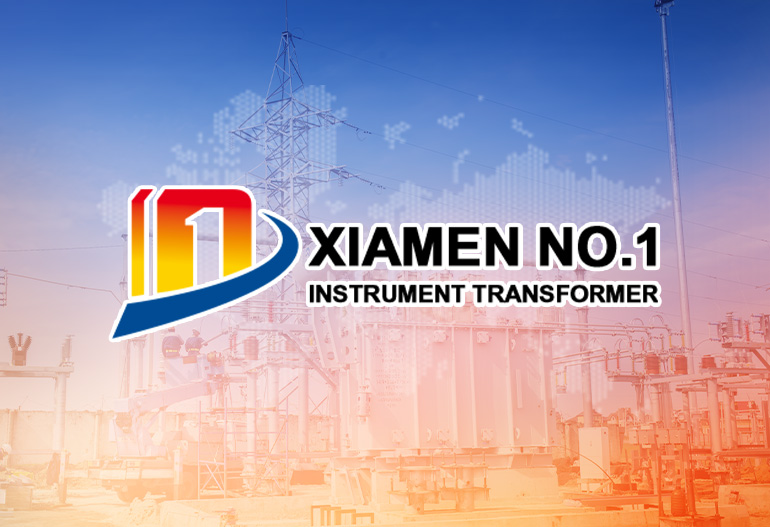
News
Structural Comparison Between Oil-Immersed Current Transformers and Dry-Type CTs
1. Overview of Oil-Immersed and Dry-Type Current Transformers (CTs)
A traditional CT design using insulating oil (e.g., mineral oil or synthetic ester) as the primary insulation and cooling medium.
Widely applied in high-voltage (HV) and extra-high-voltage (EHV) power systems due to its superior insulation performance.
Uses solid insulation materials (e.g., epoxy resin, silicone rubber) without liquid dielectric, eliminating the risk of oil leakage.
Predominantly used in medium-voltage (MV) and low-voltage (LV) systems, as well as in environments requiring high fire safety or environmental friendliness.
2. Structural Components and Comparisons
2.1 Housing and Enclosure
| Component | Oil-Immersed CT | Dry-Type CT |
|---|---|---|
| Material | Metal casing (steel or aluminum) for oil containment. | Non-metallic (fiberglass-reinforced plastic, epoxy resin) or metal casing with sealed solid insulation. |
| Design Feature | Sealed tank with pressure relief devices (e.g., buchholz relay) to prevent overpressure from oil thermal expansion. | Compact, hermetically sealed casing without liquid, often with flame-retardant materials. |
| Environmental Impact | Potential oil leakage risk; requires spill prevention measures. | No oil, reducing environmental hazards and fire risks. |
2.2 Insulation System
| Aspect | Oil-Immersed CT | Dry-Type CT |
|---|---|---|
| Primary Insulation | Insulating oil combined with paper or pressboard for dielectric strength. | Epoxy resin casting or vacuum pressure impregnation (VPI) of glass-fiber reinforced materials. |
| Insulation Structure | Multi-layered oil-paper insulation system; requires periodic oil quality monitoring. | Monolithic solid insulation with uniform dielectric properties; less maintenance. |
| Temperature Resistance | Oil degradation at high temperatures (max. ~105°C); cooling dependent on oil circulation. | Epoxy resin withstands higher temperatures (up to ~155°C) with better thermal stability. |
2.3 Core and Winding Design
| Component | Oil-Immersed CT | Dry-Type CT |
|---|---|---|
| Core Material | Grain-oriented silicon steel or amorphous metal for low core loss. | Same as oil-immersed CT; core design optimized for compactness. |
| Winding Construction | Copper or aluminum windings surrounded by oil-paper insulation, wound on a bobbin or core. | Windings embedded in epoxy resin or silicone rubber, often with concentric or toroidal configurations. |
| Electrical Clearance | Requires larger spacing between windings due to oil’s dielectric properties. | Tighter spacing possible with solid insulation, enabling smaller form factors. |
2.4 Cooling and Heat Dissipation
| Feature | Oil-Immersed CT | Dry-Type CT |
|---|---|---|
| Cooling Medium | Natural convection or forced circulation of insulating oil. | Air cooling or heat dissipation through the casing (passive cooling). |
| Heat Dissipation Efficiency | Effective for high-power applications but dependent on oil viscosity and temperature. | Limited by solid insulation’s thermal conductivity; suitable for lower power ratings. |
| Cooling System Complexity | Requires oil reservoirs, radiators, and seals, increasing system complexity. | Simple structure without moving parts or liquid systems. |
2.5 Sealing and Maintenance
| Aspect | Oil-Immersed CT | Dry-Type CT |
|---|---|---|
| Seal Design | Multiple seals (gaskets, O-rings) to prevent oil leakage; susceptible to aging. | Hermetic seals in casting or housing, with fewer failure points. |
| Maintenance Requirements | Regular oil testing (dielectric strength, moisture content), seal replacement, and oil filtration. | Minimal maintenance; periodic visual inspection for casing cracks or surface tracking. |
| Service Life | 30–50 years with proper maintenance; oil degradation limits longevity. | 20–30 years; solid insulation resists environmental degradation better. |
2.6 Voltage and Current Ratings
| Parameter | Oil-Immersed CT | Dry-Type CT |
|---|---|---|
| Voltage Class | Typically used in 35 kV to 1,100 kV systems. | Predominantly applied in ≤35 kV systems; some advanced designs for 66 kV–110 kV. |
| Current Rating | Capable of handling high primary currents (up to 20,000 A) with robust winding designs. | Limited to lower currents (up to 5,000 A) due to heat dissipation constraints. |
3. Key Structural Advantages and Disadvantages
| Category | Oil-Immersed CT | Dry-Type CT |
|---|---|---|
| Advantages | - Superior dielectric strength for high-voltage applications. - Efficient heat dissipation in large power systems. - Mature technology with proven reliability in outdoor and harsh environments. | - Fireproof and environmentally friendly (no oil). - Compact size and lightweight for easy installation. - Low maintenance and suitable for indoor or urban areas. |
| Disadvantages | - Risk of oil leakage, requiring strict sealing and environmental precautions. - Higher installation and maintenance costs. - Susceptible to moisture ingress, affecting insulation performance. | - Limited voltage and current ratings compared to oil-immersed types. - Solid insulation may crack under thermal stress or mechanical impact. - Higher cost for specialized high-voltage designs. |
4. Application Scenarios
Oil-Immersed CTs: Ideal for HV/EHV substations, transmission lines, and industrial settings where high reliability and voltage withstand are critical (e.g., offshore platforms, heavy industries).
Dry-Type CTs: Preferred in urban substations, commercial buildings, renewable energy plants (e.g., wind farms, solar parks), and areas with strict environmental regulations (e.g., underground cable systems).
5. Technological Trends
Oil-Immersed CTs: Development of eco-friendly insulating oils (biodegradable esters) and intelligent monitoring systems for early detection of oil degradation.
Dry-Type CTs: Advancements in nanocomposite epoxy materials to enhance thermal conductivity and voltage resistance, enabling applications in higher voltage classes (e.g., 66 kV–110 kV).
6. Conclusion

XUJIA
I graduated from the University of Electronic Science and Technology, majoring in electric power engineering, proficient in high-voltage and low-voltage power transmission and transformation, smart grid and new energy grid-connected technology applications. With twenty years of experience in the electric power industry, I have rich experience in electric power design and construction inspection, and welcome technical discussions.

